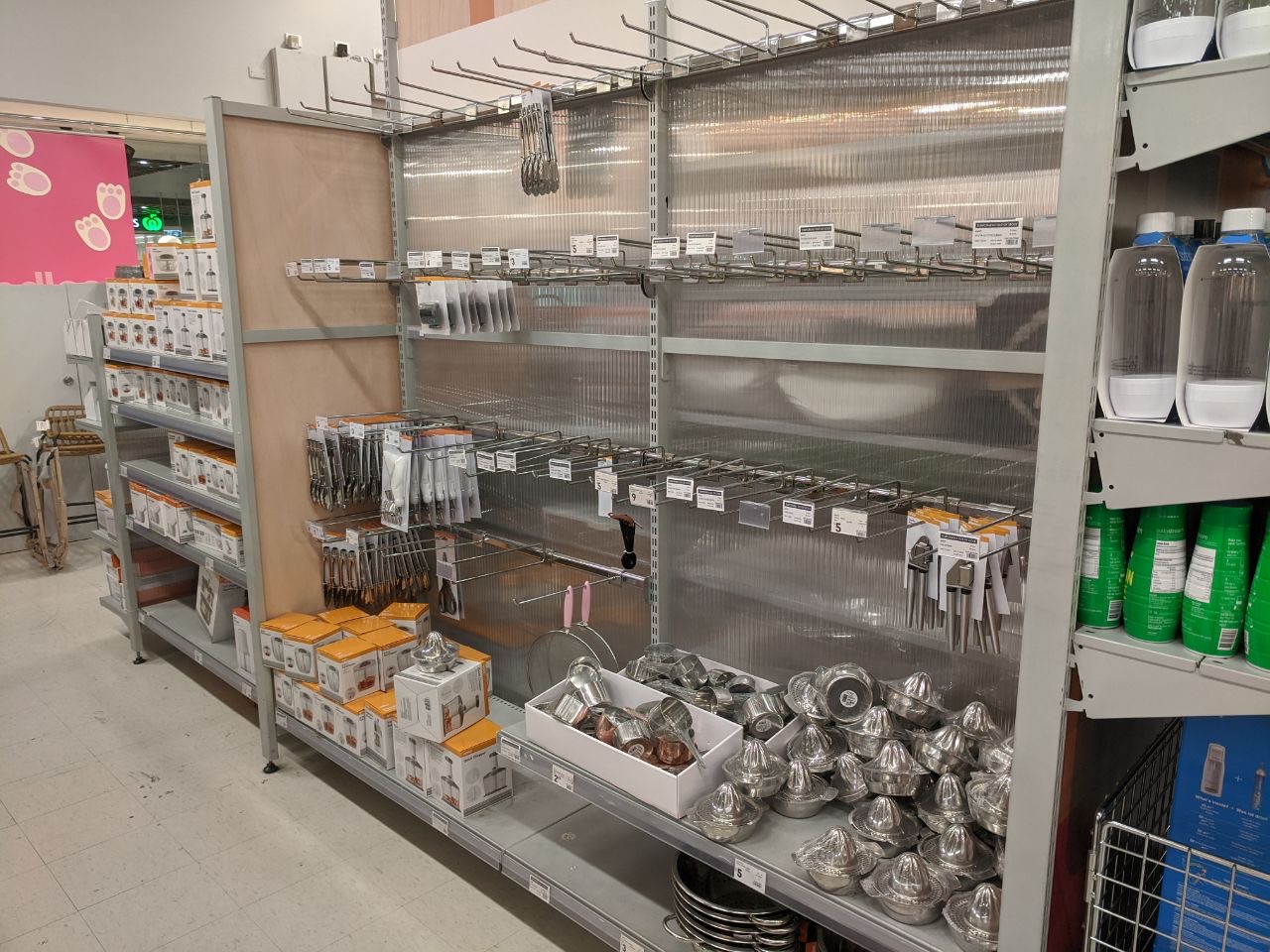This is what being on a ‘war footing’ against COVID-19 looks like

Before 1942, Australia hadn’t fully come to terms with what a world war would require it to do.
By the end of 1942, after the Japanese Imperial airforce bombed Darwin, the country was a very different place.
It had gone from a tiny population of 7 million, reliant on trade for income with an unemployment rate of 4 per cent (down from 12.5 per cent at the start of the war), to a drastically altered ‘war economy’; the shock of seeing a hostile enemy on the doorstep gave Prime Minister John Curtin the authority to take total control of some industries and severely curtail others, and reduced unemployment to effectively nil.
Australia emerged with a manufacturing sector that had experience making everything from boots to airplanes, and from which came the Holden car and the Hills Hoist clothesline — designed in 1945 by war veteran Lance Hill. That manufacturing ability would linger into the early 21st century.
Today, Australian bureaucrats and foreign politicians have become fond of claiming that efforts to fend off the worst of the COVID-19 pandemic are equivalent to a “war footing”.
Indeed, on Sunday night during an interview on the ABC, Prime Minister Scott Morrison said: “every Australia is enlisted in the fight against the virus” and “we must ensure it does not break our spirit”.
A war economy prioritises the goods and services that support the war effort. In 1942 this meant munitions, uniforms, and soldiers.
But the enemy is a virus not a tangible, motive-driven human being and, so far at least, the Australian government has so far limited itself from taking control of any part of the economy. Employment minister Michaelia Cash expects unemployment to spike and the government, with a new $66bn assistance package announced over the weekend, is gearing up to protect the economy rather than mobilising it against a common enemy.
However, some sectors are being required, either by government or by necessity, to step up and help with the effort against the pandemic.
The emerging ‘COVID war economy’ bears a few similarities to one set up to support a war effort, a factor that will be good for some sectors, negative for others, and uncomfortable for those such as supermarkets and telecommunications utilities, as people working from home puts pressure on weaker parts of the country’s Internet infrastructure.
The Great Toilet Paper Panic of 2020
The first sector to feel the heat were the supermarkets. Panic buying led to in-store shortages and then rationing at all food sellers from majors like Woolworths (ASX:WOW) to the minnows.
On March 15, a harried check out operator at a Coles in Brunswick, Melbourne told this journalist that the day before, a Saturday, had been the store’s biggest trading day ever.
Coles declined to confirm this.
The major supermarkets have since moved into rationing, limiting highly sought after items such as rice and toilet paper to one or two per person. The Age newspaper reported last week that some regional supermarkets were requiring identification to ensure locals were not competing with ‘out of towners’ from cities for goods.

While it’s an uncomfortable time for supermarket staff and for management which have been forced to restrict sales, investment bank UBS said in a note last week that sales had spiked by more than 25 per cent year-on-year across stores in recent weeks.
It said this would translate into stronger top-line sales, stronger gross margins and higher costs.
Unfortunately, unlike a war time-boosted industry, Morningstar retail analyst Johannes Faul says the good times won’t last for supermarkets.
“I would see this as a transitory period where people get very worried, very panicky, because it’s an unknown situation and it puts so much more pressure on supply chains,” he told Stockhead.
“As this peters out it will be business as usual.”
Moreover, once pantries, deep freezers and garages are full of frozen peas and toilet rolls, it’s likely supermarkets may even see a slump in sales as people work through their stores.
Government gets out the big guns
“If you think back to traditional wars the industries that did very well were obviously manufacturing because you’re building lots of things… in a war against a virus you’d think areas of the healthcare sector. Those needing to supply hospitals, hospital equipment, face masks and what not,” BetaShares chief economist David Bassanese says.
Healthcare is one area where the government has deployed its resources. Aside from spending an extra $2.5bn on health, it sent the army in to help surgical mask maker Med-Con in Shepparton rapidly ramp up production.
And last week the Department of Industry, Science, Energy and Resources requested information from industry to map domestic production of personal protective gear including surgical face masks, gowns and gloves, surgical goggles and eyewear, and mask fit test kits.
ASX punters began betting on coronavirus stocks as early as January, when China admitted it had a problem, and early birds Zoono (ASX:ZNO) and Holista CollTech (ASX:HCT) saw the opportunity to break into the hand sanitiser market.
Economist Stephen Koukoulas pointed to private hospitals such as Ramsay Healthcare (ASX:RHC), pharmaceuticals manufacturers like IDT Australia (ASX:IDT), and medical supplies makers as companies which could be called on to support the country’s efforts to flatten the pandemic line.
Add to these diagnostics companies. TBG Diagnostics (ASX:TDL) has been suspended from trading over whether it disclosed news that an investee’s COVID-19 test kit had been approved for sale early enough.
Sonic Healthcare (ASX:SHL) says it’s “currently playing a crucial frontline role in combating the pandemic. Our laboratories in Australia, the US and Europe are testing thousands of patients every day for COVID-19”.
Who’d want to be a banker
Banks have been pressed into service.
Last week the Reserve Bank lowered the official cash rate to 0.25 per cent.
BetaShares’ Bassanese says banks will be under pressure to either pass those cuts on or offer something better.
He says profit margins and interest income will suffer for the good of “Team Australia”.
The banks are offering a range of loan holidays, fixed rate mortgage interest rate cuts, and repayment reductions to individuals and small businesses. CBA (ASX:CBA) and Westpac (ASX:WBC) are also lifting 12-month term deposit rates to 1.7 per cent. Only ANZ is lowering its variable mortgage rates.
Regulators are making it easier for banks to participate in the government’s bid to protect business and individuals from going under.
On Friday, the competition regulator allowed 11 banks including the big four to coordinate their efforts to assist small businesses. Normally this would be considered cartel-like behaviour by the ACCC.
Banking regulator APRA has also relaxed its capital holding requirements. Banks are required by law to hold a certain amount of capital in case of a crisis, and Australian banks have typically held more than the minimum requirements, APRA said last week.
“APRA has been pursuing a program to build up the financial strength of the system for many years, when banks had the capacity to do so. As a result, the Australian banking system is well-capitalised by both historical and international standards,” APRA chair Wayne Byres said.
“APRA’s objective in building up this capital strength has been to ensure it is available to be drawn upon if needed in times such as this … even if the banking system utilises some of its current large buffers, it will still be operating comfortably above minimum regulatory requirements.”
Nice to have, just not in a pandemic
The government is curbing some industries as part of the effort to control the pandemic, such as banning non-residents and non-citizens from entering the country, barring people in Australia from leaving, and limiting the number of people who can meet in one place.
But rather than businesses and employees from those industries being transferred into ‘war time critical’ industries, the government is having to prop them up to ensure they survive until the crisis is over.
“For the bulk of people in hospitality and these sorts of industries it’s going to be grim,” Koukoulas says.
“The government will try to look at how you can keep people with some sort of financial security… It’s getting money into the business sector to keep them afloat. If it costs a lot of money, it costs a lot of money. We can clean it up after.”
Politicians and analysts, including US Treasurer Steve Mnuchin, are hoping a recovery after the pandemic will be led by pent-up demand which should drive up inflation and boost economies, as was the case after World War 2.
While companies such as Cochlear (ASX:COH) are relying on this for its hearing implants and it could be the same for flights as people take holidays after months cooped up at home, lost demand in industries such as hospitality cannot be made up later.

UNLOCK INSIGHTS
Discover the untold stories of emerging ASX stocks.
Daily news and expert analysis, it's free to subscribe.
By proceeding, you confirm you understand that we handle personal information in accordance with our Privacy Policy.








